Story by Larry Perkins
We were off to the races.
And I had piles.
Sebring, Florida, March, 1964. For a few select days each Spring, a caravan of car haulers and racing fans weaves its way into the tranquil little orange-grove town on “The Ridge”—the lake-dotted high-ground running along the spine of the Sunshine State.
You’d probably think, “What an unlikely spot for a big motorsport event.” But by the mid-60s Sebring had made its place in the lists for over a decade, and would again be hosting the “12-Hour Grand Prix of Endurance.”
I had visited here twice before—in 1959 for the first U.S. Grand Prix and, improbably, the following year as a guest of Gordon Pennington and his #12 Ferrari 250 GT SWB berlinetta. But this time I would be driving my Ferrari 250 GTO, with what we hoped was a chance to win something in this infamously difficult road race.
But now I had a disturbing development—horrific hemorrhoids.
In case you aren’t aware, a case of piles is a diabolical thing. We all know about the Seven Deadly Sins, but if there are also Ten Terrible Torments, this bottom-dwelling monster tops the list.
Whom the piles grips is transformed in one instant from man to shark; and like the shark that must remain in perpetual motion, so the sufferer of piles writhes and twists, bending and quaking in ceaseless turmoil. From between his teeth come sounds so primitive as to make the skin creep. He would sell his birthright, forfeit his honor or his name, even kill to rid himself of agony. And like a maddened beast, he lashes out at all who come near.
== paraphrasing Dr. Richard Selzer ==
This malady produces itching discomfort, morphing into nearly intolerable hot aching pain in a very inconvenient corner of one’s anatomy. It hurts—and bleeds—when one stands, kneels or lies down. And it really throbs when you sit. It is hugely aggravated when you sit on something bouncy and jolting—like the seat of a race car. And nowhere could a race car bounce or jolt more than on that primitive old circuit at Sebring.
In 1964, arrival for an endurance race pretty much followed a standard procedure. The crew unloaded the prepared car from the trailer and moved it to the garage…if there was one. The road grime was cleaned up and the whole rig got a quick once-over, including running the engine, to assure that it would pass official scrutineering (technical inspection).
Routine paperwork was sorted out, and the car was driven to the inspection site, in Sebring’s central circle—a picturesque park in the center of the tiny business sector, five miles from the track. There experts examined, measured, weighed and certified it for rules compliance, mechanical readiness and safety. The inspectors applied a non-removable sticker where it could be easily seen by pit stewards, and the car was released to enter the track. In those days, the drivers’ outfits also got a perfunctory check; the clothing was cotton, and some of the helmets were basically modified polo headgear. Safety, to many, was a bit of an afterthought.
If there was a glitch, if the car failed tech, then the crew had to deal with the disruption. Sometimes the violation was minor—a loose part or wire, say—but it could be more serious, like a fluid leak, or a bad driving lamp, or some part of the bodywork out of spec. Then the team had to really get busy, because all-important practice sessions would be starting promptly. After corrections, the car needed to go all the way back to scrutineering for final approval. And, as with everything in motor racing, time was critical.
The team drivers were not idle during all of this preparation. After all, it was our butts in the seat, and we had a vital interest in tuning up this complicated collection of tools called a “race car”. We were active members of the crew, and one with a bad case of hemorrhoids was not a big help. It was torture, but practice loomed, and I tried hard to hold up my end.
“Practice?” you might say. “If you’ve run here before, and the car’s ready, who needs practice?” The answer is that every trip to every track is different. The car has been freshly-prepared, often with a re-built motor, so it contains a whole shopping list of unknowns. The track surface has changed since your last visit, and even changes some more during practice. The crew needs to re-accustom themselves to the pit procedures. The drivers need track time to get into the groove. The stewards need to familiarize themselves with the cars and teams. Qualifying for starting positions is run during practice.
Finally, an endurance race is just that—your car must withstand quite a few laps of practice, assuring its ability to endure 12 hours of unrelenting hammering that will stress every nut, bolt and washer to the max in head-to-head competition. Drivers’ fitness is key too, enabling them to endure and excel. To simply finish the Sebring race, whatever your final position, has long been considered a certain mark of success.
By Friday my unwelcome affliction had not improved. The practice sessions had tormented it pretty intensely, and I now began to imagine evil spirits … demons that were somehow angered and visiting their excruciating vengeance on me. They formed a cluster of inflamed fireballs lurking you-know-where. The race would begin at 10:00 the next morning. There was no way I could start like this. I desperately needed to do something.
Then I ran into a local guy in the pit lane: “Larry, that’s murder…you gotta see Doc. He’ll have something.” Doc wasn’t a physician; his real name was Phil and he was a pharmacist who presided over Sebring’s only drug store. In our special world of busted knuckles and frequent burns and stuff too nasty to breathe, a sort of medical fix-it guy was more indispensable than a regular doctor. Everyone relied on Doc for advice and over-the-counter snake oil that racing people always need.
I headed downtown and found the drugstore in a charming old brick store-front on the Circle. Inside, with his starched white coat, rimless glasses, and easy smile, Doc conveyed compassion, authority, reassurance. Unfortunately, though, he advised that there wasn’t much he or anybody else could do.
The standard treatments were applications of an ointment called Preparation H that had been around for thirty years, and sitz baths with Epsom salts that have been around for centuries.
Doc provided me with a squeeze-tube of Preparation H and a big sack of salts. But then he had a brain-storm. “What you need” he said, “is something to sit on, to insulate your nether region from the battering that track is sure to deliver. I have just the thing.” He rummaged under the counter and produced a little inflatable red rubber donut. “It’s used, so I can’t sell it,” Doc said, “But I’ll lend it to you and you can return it after you win that race.”
Encouraged, I took Doc’s nostrums and his rubber lifesaver, and went to my room to start the cure. Lying in a tub, I applied Doc’s magic, steeping one end of me in hot Epsom brine and chilling the other with a couple of icy vodka gimlets. I had to skip the last-minute work with the crew, but next morning, after applying gobs of Preparation H, I was able to stand, walk, and (most importantly) sit without groaning in anguish.
So picture this: during the running of the 1964 Sebring 12 Hours, we had to manage my damn donut along with everything else. Drop it in the seat before I jumped in; retrieve it at pit stops when I turned over to Bill; make sure it stayed inflated and nothing punctured it; keep oil and fuel off it. And the thing was just thick enough to make squeezing into the car twice as challenging when I was in a helluva hurry.
Did it work? Well, it wasn’t a silver bullet, but once in place it made life in the cockpit tolerable for several hours at a time. We had a competitive car, a great crew and a very fast co-driver, Bill Eve. There was plenty of extra excitement, with a huge crash and fire quite near us on the pit straight. It’s hard to worry about your bottom when you’re busy trying to get on top of all those things.
And in fact we did win something. We endured mechanical trouble and a long pit stop, dropping us down the list of finishers. But so did other teams. We managed to take 3rd in Class GT 12, for which we received a small check, a nice Heuer stop watch, and a silver cup that I still treasure (but often forget to polish). Like I said, finishing Sebring is a feather in one’s cap…and possibly a trophy on one’s shelf.
When I returned Phil’s donut, I assured him we had taken good care of it. And I told him, “Doc, that thing really saved my ass.”
Doc smiled and nodded wisely, as shamans are inclined to do.
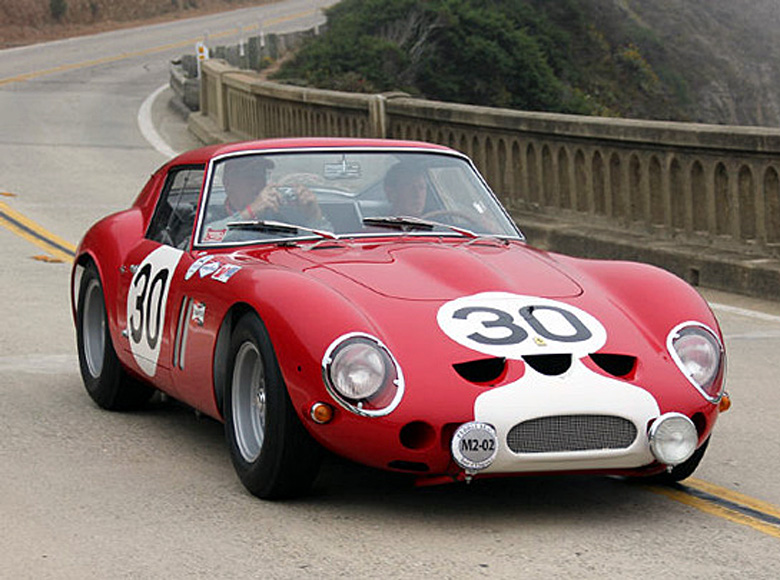
The first GTO on the bridge at Pebble Beach, 2011.That’s Alan Boe and David Seielstad (driving) in the cockpit.
Hugues Vanhoolandt photo
Author Larry and his wife Petra Perkins are currently writing a joint memoir entitled “Full Circle: A Hands-on Affair With the First Ferrari 250 GTO”, to be published soon.
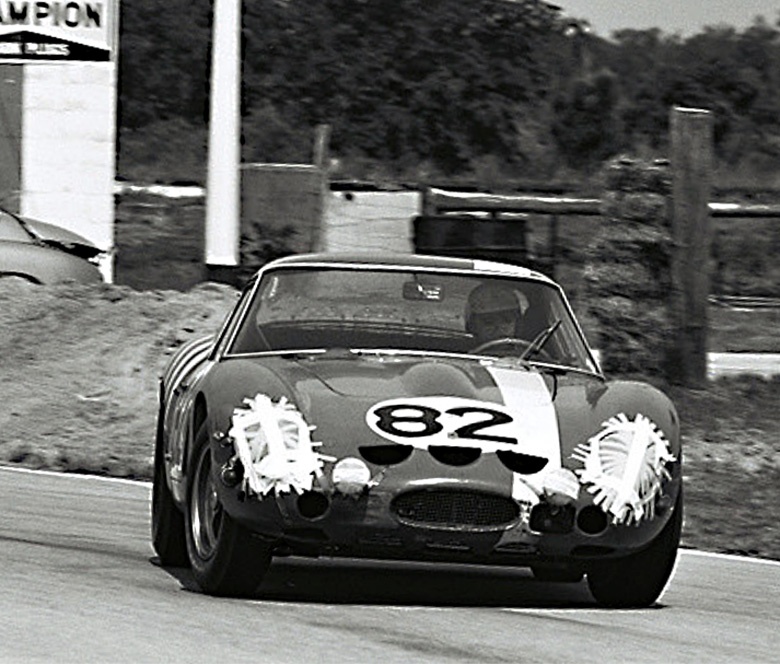
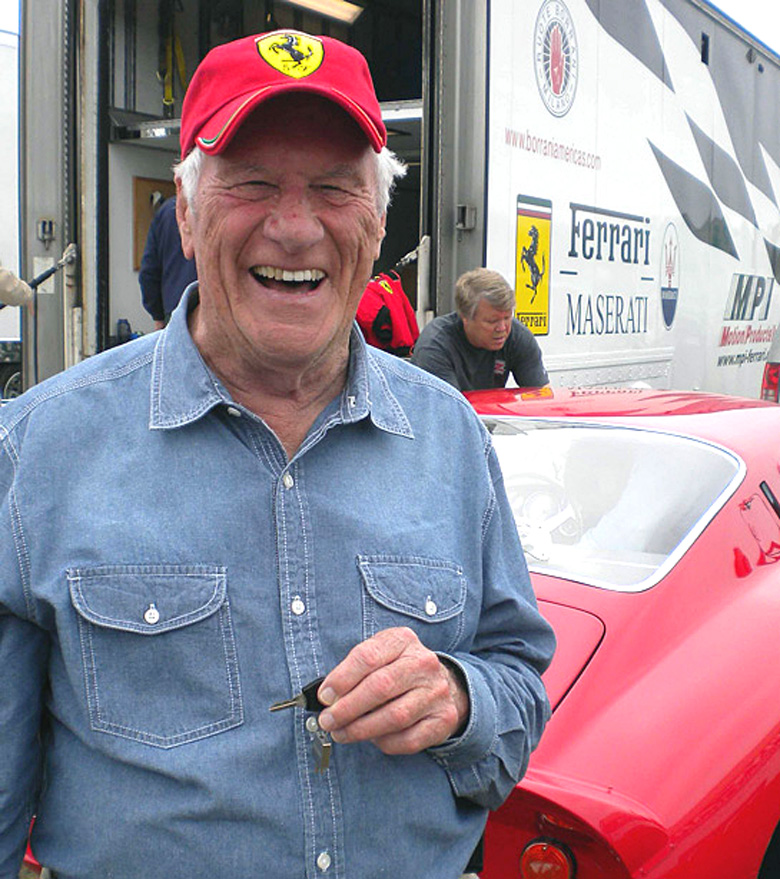
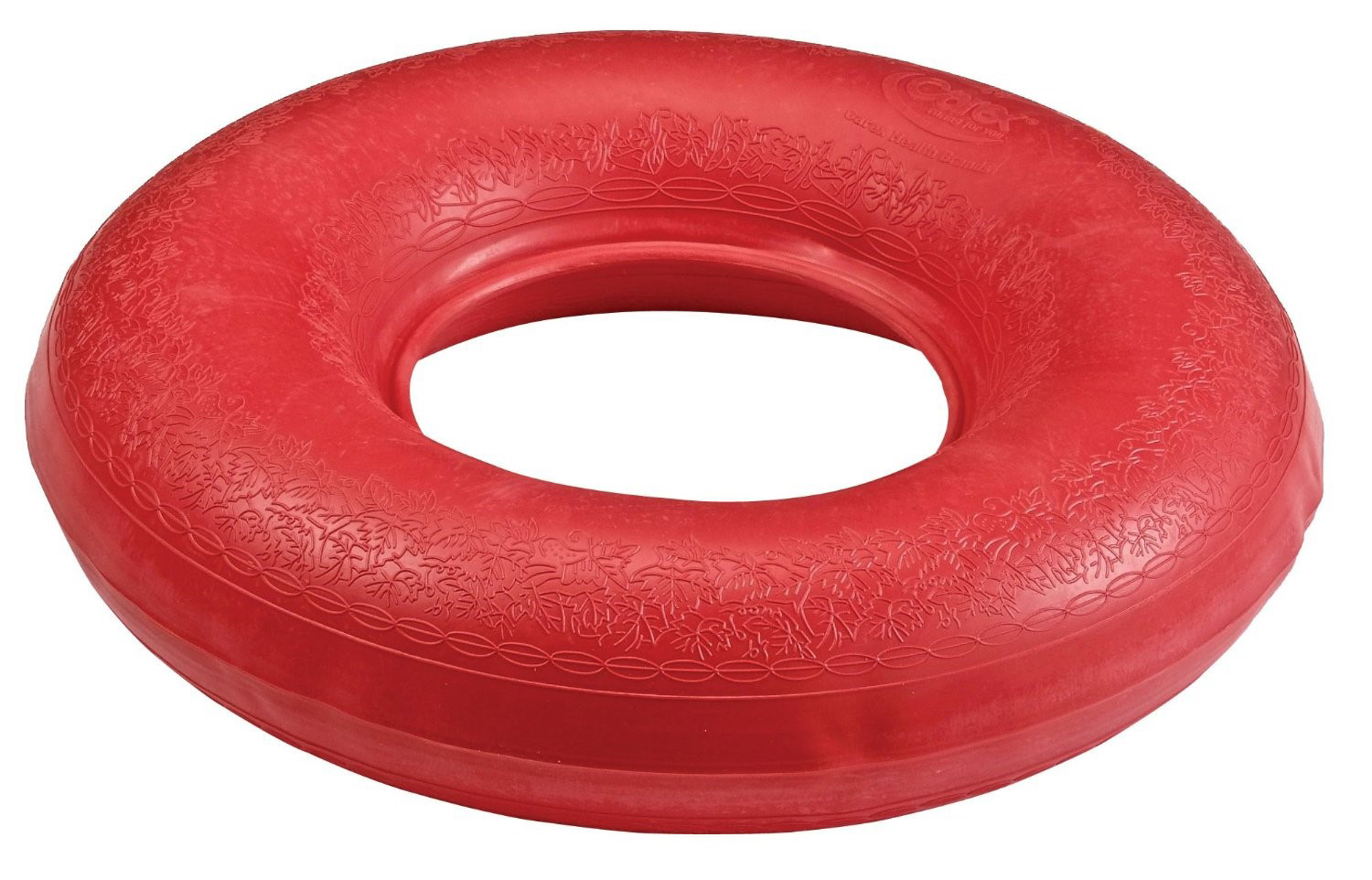
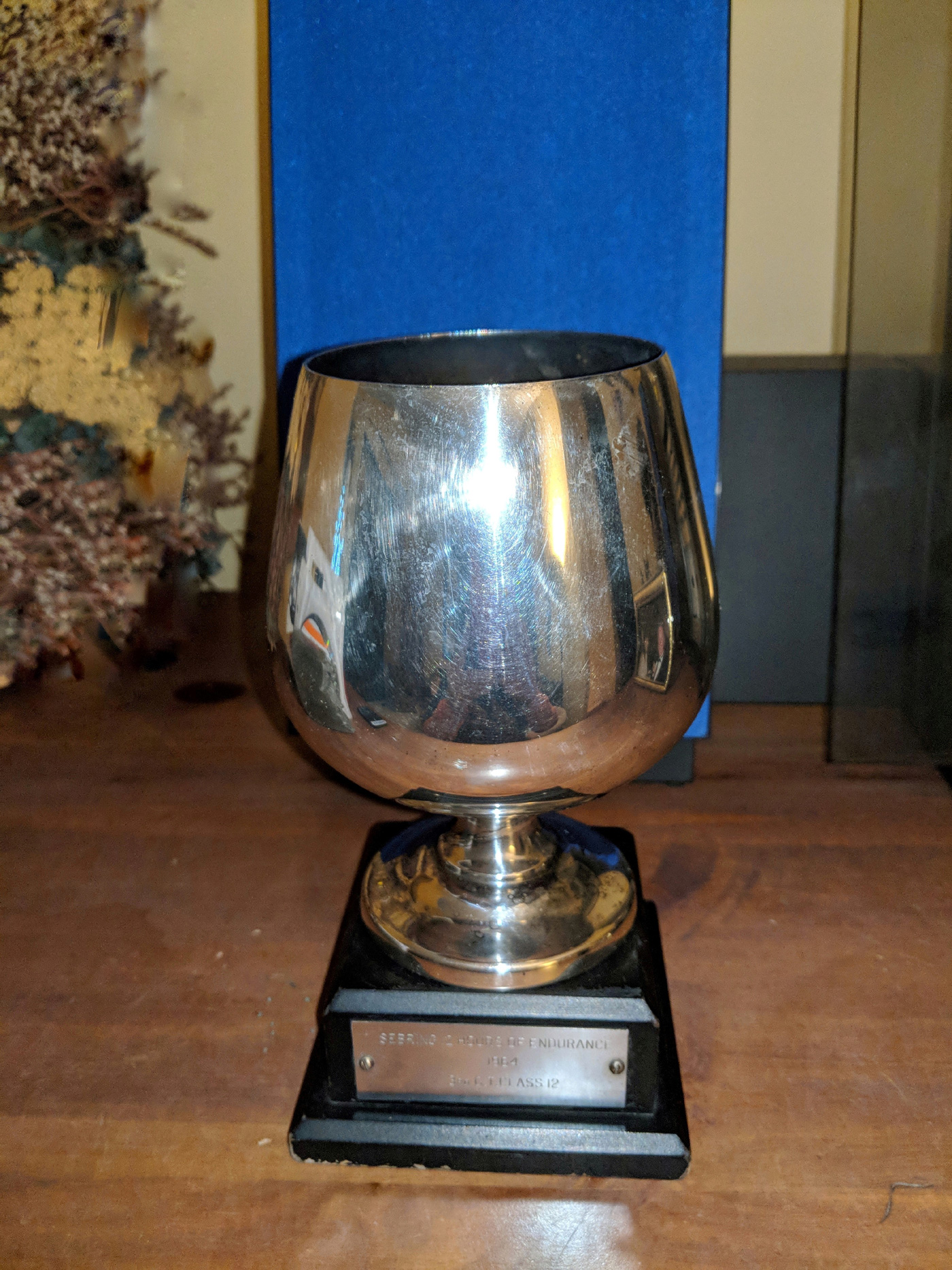
“Sebring” was very big in the late 1950s. Even for those not participating.
For those of us who had sportcars, usually TR3s or MGTFs, it was a long and cold winter.
And insiders in looking forward to the change in season, would utter “when Sebring comes”. Or “Soon it will be Sebring”.
Non-afficionados didn’t get the phrase.
Sportscars and cold weather!
I think I hold the world’s record for starting an Alfa on a cold morning.
Winnipeg, Manitoba, in 1965. Giulia Spider parked outdoors, and “plugged in” with a rad-hose heater and electric warmer for the battery.
My memory had the temp at 48 below F.
Checked the archive and it was -49, official, no windchill BS.
Absolute vintage stuff — I love it!! And, the writing style is so good — I laughed out loud many times. I know the feelings; so, this piece really hit home! Doc — what a novel, practical way to “rectify” that most uncomfortable curse!
Thank you.
Prep H is oil from sharks. It really works. Wonderful account. About the race, I mean.
That picture of the GTO on the Pebble Beach tour in 2011 has David Seielstad driving and me in the passenger seat taking a photo. A great run in a GREAT car.
Alan Boe
Only Larry Perkins can come up with a story like this one! Well done Larry!
Great story…
I could read or listen to your stories for hours at a time. You do that great era justice. Don’t stop now!
Debra Specht
Keep those great stories coming!
As Trooper Thornton said earlier, I could read or listen to your stories for hours at a time – and I have been fortunate to have heard many of Larry’s stories over coffee and a bear claw at our local Panera Bread – which reminds me Larry it is time to schedule our next meeting at The Bread.
Great story and totally relatable. I’ll leave that right here! Love your humor ??
I have known Larry as an Sculptor Artist for many years. To read about his experiences as a race car driver is always fascinating. This one is truly hilarious!
Well done, Larry!
In 1977 I travelled to the USA in search of an IT guy to help with my big European systems project and found Larry, and also discovered a racing driver, sculptor and one of the best raconteurs you’ll ever meet. His experience is so wide he is never at a loss for a yarn, so I am really looking forward to reading the unexpurgated story of his love affair with the GTO. His laconic writing style is a favourite of mine, so despite his American spelling I’m confident his book will prove a great hit with racing fans in the UK.
I am an ER doc – you most likely had what we call thrombosed hemorrhoids. They are very painful and can bring a grown man to tears. That makes your accomplishment even more impressive!